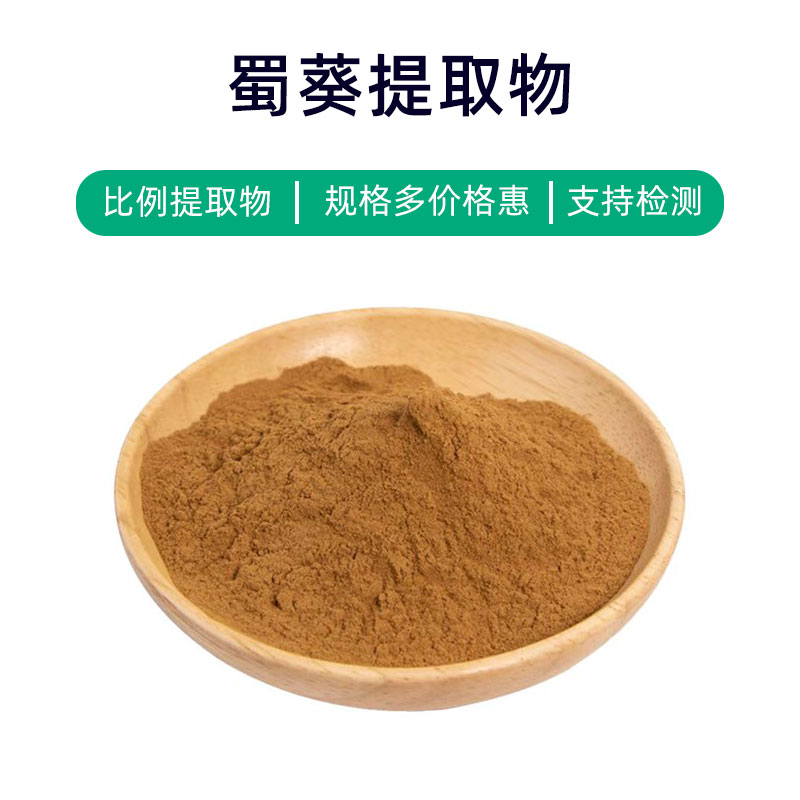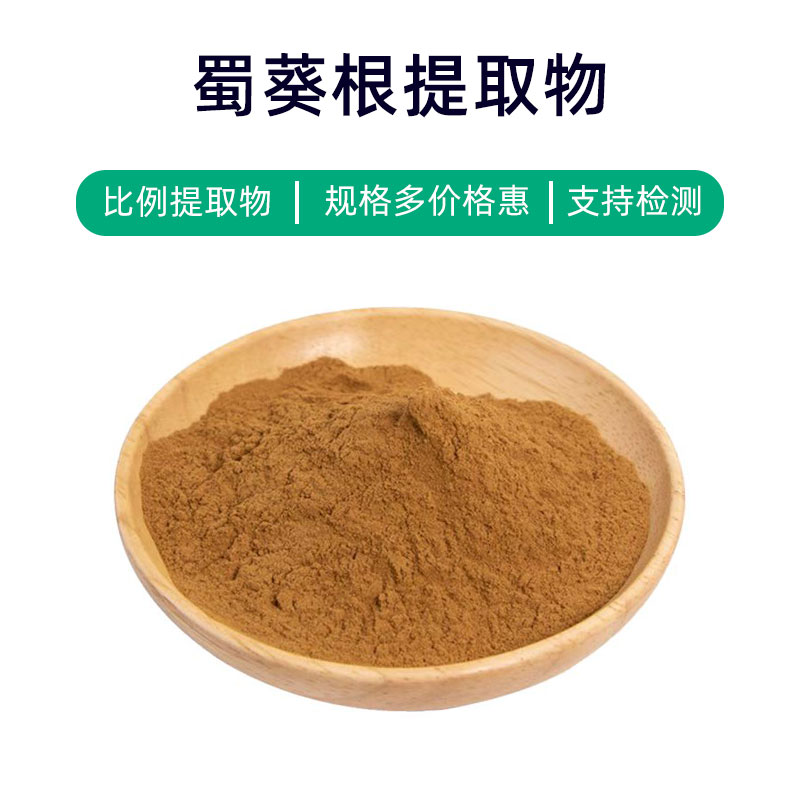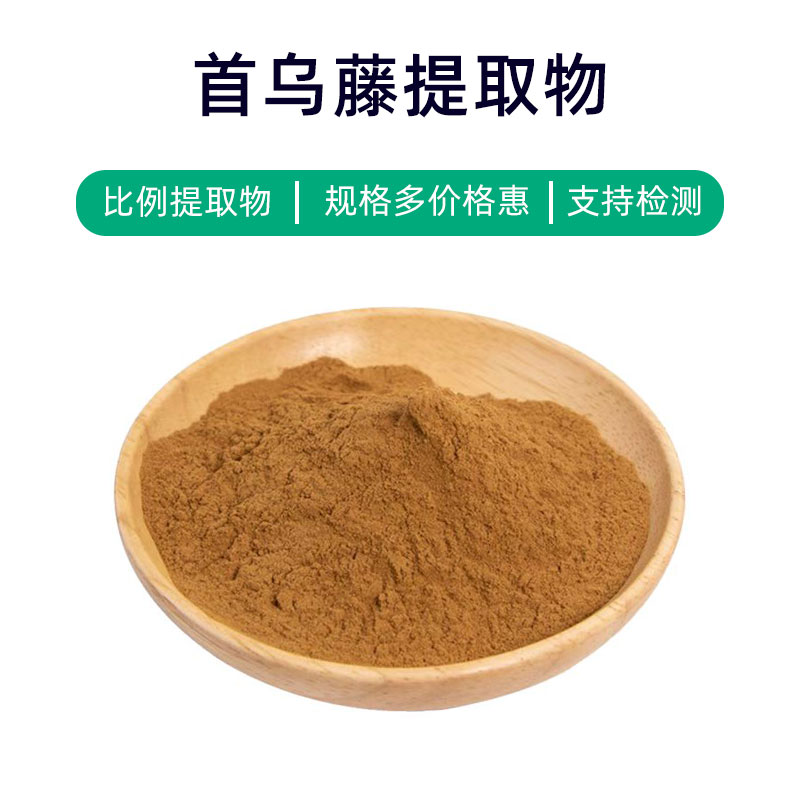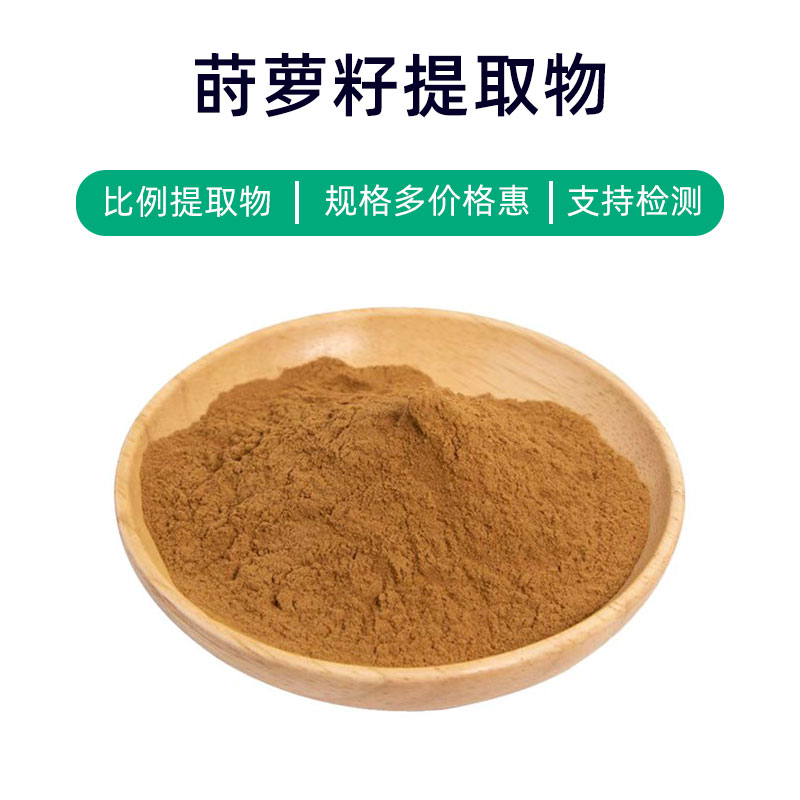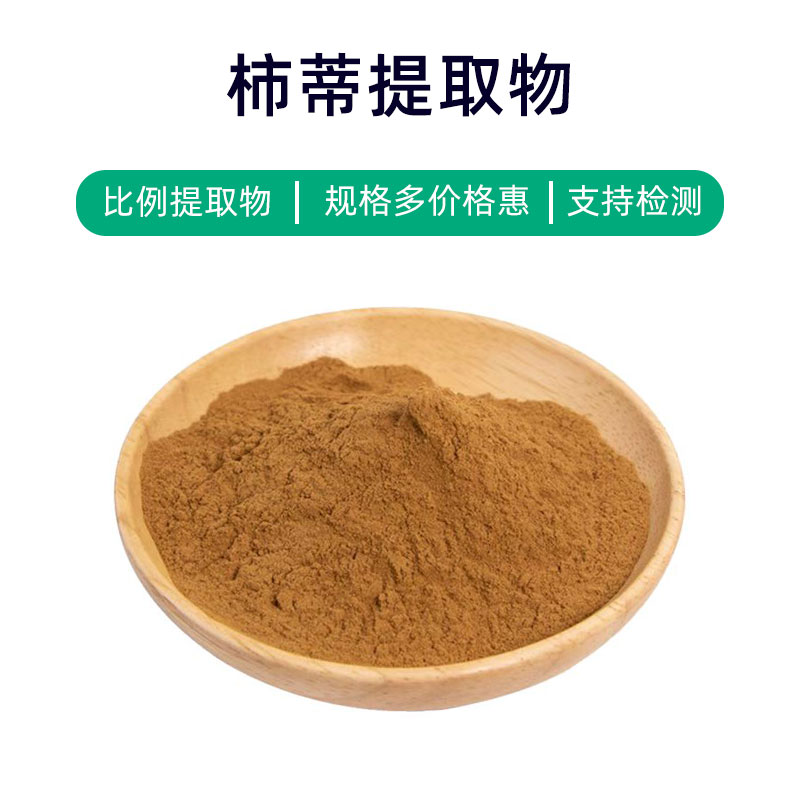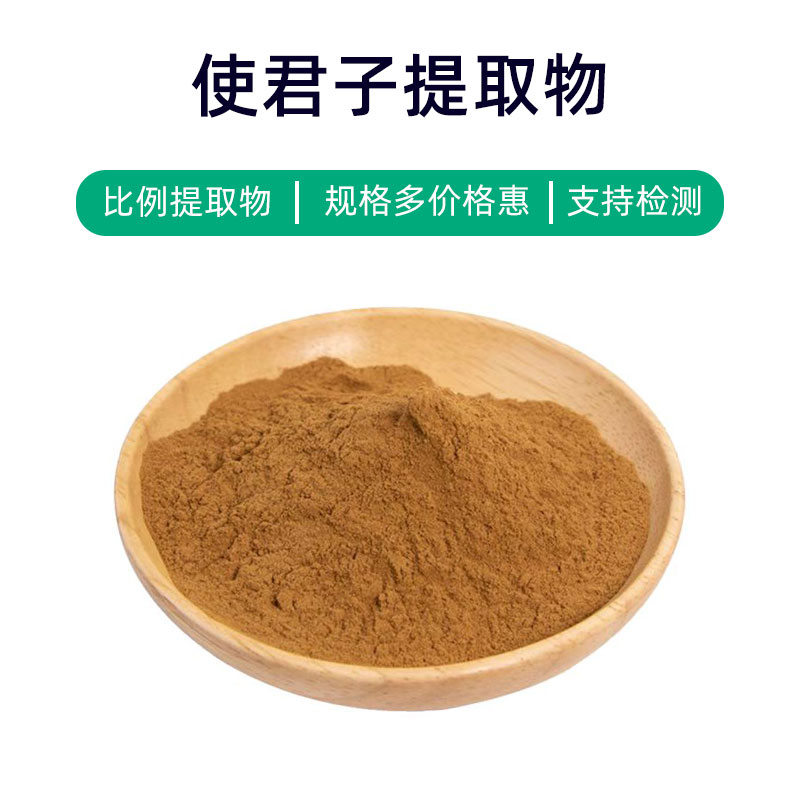Product Introduction of Honeysuckle Extract
Honeysuckle extract is a natural plant extract derived from the flowers and leaves of honeysuckle (Lonicera japonica). Its main components include phenolic compounds, volatile oils, and flavonoids. Honeysuckle extract is widely used in the pharmaceutical, cosmetic, and food industries.
In the pharmaceutical field, honeysuckle extract has anti-inflammatory, antibacterial, and detoxifying properties. It is often used in traditional Chinese medicine formulations to treat symptoms like colds, fevers, and sore throats. Its antioxidant and anti-aging characteristics also make it a common ingredient in cosmetics, applied in skincare products, masks, and anti-aging formulations to help protect the skin from free radical damage and slow down skin aging. Additionally, in food additives, honeysuckle extract serves as an antioxidant and preservative, extending shelf life and maintaining food freshness and nutritional value.
Overall, honeysuckle extract, as a natural plant extract, possesses multiple benefits and widespread application, making it a key ingredient of interest in the pharmaceutical, cosmetic, and food industries.
Production Process of Honeysuckle Extract
The production process of honeysuckle extract typically includes the following steps:
- Collection: First, honeysuckle flowers and leaves should be collected at maturity. Generally, collection is done in the early morning or evening when temperatures are lower for better quality.
- Washing: The collected honeysuckle flowers and leaves need to be washed to remove surface impurities and dirt. Multiple rinses with clean water ensure thorough cleanliness.
- Chopping: The washed flowers and leaves should be chopped to enhance extraction efficiency. Chopping can be done mechanically or manually.
- Extraction: The chopped flowers and leaves are then subjected to extraction, with common methods including water extraction, ethanol extraction, or supercritical fluid extraction. Parameters such as temperature, time, and solvent concentration must be controlled to ensure effective extraction and product quality.
- Filtration: The extracted solution needs to be filtered to remove residues and impurities, yielding a pure extract liquid.
- Concentration: The filtered extract liquid is then concentrated to remove solvents and increase product concentration. Concentration can be achieved through vacuum concentration or evaporation.
- Drying: Finally, the concentrated extract liquid is dried to obtain a solid extract. Common drying methods include spray drying, vacuum drying, or gas chromatography drying.
- Packaging: The dried extract needs to be packaged, usually in sealed containers to prevent moisture and oxidation. After packaging, the product is ready for storage and transportation.
This summarizes the production process of honeysuckle extract, where each step requires strict controls to ensure product quality and safety.
Effects and Side Effects of Honeysuckle Extract
Honeysuckle extract is a traditional herbal medicine with numerous benefits and effects:
- Anti-Inflammatory Effects: Honeysuckle extract contains various active components that have anti-inflammatory properties, useful in treating illnesses like rheumatoid arthritis and enteritis.
- Immune Modulation: Research indicates that honeysuckle extract can regulate immune system functions, enhance immunity, and help prevent infectious diseases.
- Antioxidant Effects: Rich in various antioxidants, honeysuckle extract can eliminate free radicals, reduce oxidative stress, slow aging, and protect cell health.
- Anti-Tumor Effects: Some components of honeysuckle extract have shown anti-tumor activity, inhibiting the proliferation and metastasis of tumor cells.
- Blood Sugar Regulation: Certain compounds in honeysuckle extract are believed to help regulate blood sugar levels and assist in diabetes management.
- Liver Protection: Honeysuckle extract offers liver protection, helping to alleviate liver damage and promoting liver cell regeneration, aiding conditions like hepatitis and fatty liver.
- Anti-Thrombotic Effects: Active components in honeysuckle extract can inhibit platelet aggregation, providing a certain degree of anti-thrombotic benefits, helping to prevent cardiovascular diseases.
- Cholesterol Regulation: Studies show that honeysuckle extract can help lower total cholesterol and low-density lipoprotein cholesterol levels, helping to prevent atherosclerosis and related diseases.
While honeysuckle extract has many beneficial effects, attention should be paid to the following points during use:
- Dosage Control: Use honeysuckle extract according to medical advice or product instructions to avoid excessive use leading to adverse reactions.
- Consider Contraindications: Certain groups, such as pregnant women, nursing mothers, and children, should avoid honeysuckle extract and should consult a doctor before use.
- Avoidside effects: Some individuals may experience allergic reactions or digestive discomfort. Discontinue use and consult a doctor if any adverse reactions occur.
In summary, honeysuckle extract has various functions and applications and can be a medicinal ingredient in the pharmaceutical field, but it should be used with caution according to medical advice.
Application Scenarios and Dosage of Honeysuckle Extract
Honeysuckle extract is widely used in the pharmaceutical, food, and cosmetic industries. Below are the application scenarios and dosage recommendations for each field:
- Applications in Medicine:
- As a traditional Chinese medicinal ingredient, honeysuckle extract is widely used to treat conditions such as rheumatoid arthritis, osteoporosis, and hepatitis.
- Dosage: Generally taken orally or applied externally. Oral dosages can range from 5-10 grams, 2-3 times daily as per medical advice; for external application, it can be applied to affected areas and gently massaged until absorbed.
- Applications in Food:
- As a health food ingredient, honeysuckle extract is processed into capsules, tablets, and other forms for enhancing immunity, regulating blood sugar, and lowering cholesterol.
- Dosage: Typically according to product instructions or doctor’s advice, generally 1-2 capsules, 1-2 times daily, taken after meals with sufficient water.
- Applications in Cosmetics:
- Added to cosmetics for skincare, whitening, and spot removal effects, commonly found in masks, lotions, and serums.
- Dosage: Use according to product instructions, typically 1-2 times daily, applying an appropriate amount to clean facial skin and gently massaging until absorbed.
- Safety Precautions:
- Always read the product manual before use and strictly follow the dosage instructions to avoid excessive or prolonged use.
- Pregnant women, nursing mothers, children, the elderly, and individuals with special conditions should consult a doctor before use.
- Those with allergies to product ingredients should use caution; if allergic reactions occur, stop using immediately and seek medical assistance.
In summary, honeysuckle extract has significant application value across the pharmaceutical, food, and cosmetic sectors, but usage should adhere to recommended dosages to ensure safe and effective results.
Overview of the Source Plant of Honeysuckle Extract, Distribution, and Growth Environment
Honeysuckle (scientific name: Lonicera japonica Thunb.) is a common woody climbing plant belonging to the Caprifoliaceae family, originally from China. Here are detailed characteristics of honeysuckle:
- Plant Characteristics:
- Honeysuckle is a perennial climbing vine with slender stems reaching heights over 10 meters.
- Leaves are opposite, ovate or elliptical, leathery, with serrated edges, smooth on the surface, and hairy on the underside.
- Flowers are tubular in shape, white or light yellow, usually blooming from spring to summer, and are very fragrant.
- Distribution:
- Honeysuckle is native to China and is widely distributed in regions south of the Yangtze River, including provinces like Jiangsu, Zhejiang, Anhui, Fujian, Jiangxi, Hunan, and Guangdong.
- Due to its adaptability, honeysuckle has been introduced worldwide, including areas like Japan, Korea, and North America.
- Growth Environment:
- Honeysuckle thrives in warm, humid climates with a high light requirement, growing best in sunny and well-ventilated environments.
- It is not strictly particular about soil quality and is hardy against poor conditions but requires good drainage, as it cannot tolerate prolonged waterlogging.
- Growth Habits:
- Honeysuckle prefers wet environments, often found along stream banks, forest edges, and in valleys, and also common along roadsides, gardens, and field edges.
- It exhibits robust adaptability and growth, often found on hillsides, wastelands, and corners, and sometimes even becomes a weed.
- Main Uses:
- Besides being used in landscaping as an ornamental plant, all parts of honeysuckle—stems, leaves, and flowers—have medicinal value and are frequently utilized in traditional medicine for effects such as heat-clearing and detoxifying, as well as diuretic properties.
- Honeysuckle is also an important nectar source for bees, providing significant nectar attraction and serving as a vital plant for honey production.
In summary, honeysuckle is a common vine plant, native to China, widely distributed in southern regions, preferring a warm and humid growing environment, and holds significant medicinal and ornamental value.
Processing and Storage of Honeysuckle Extract
The processing of honeysuckle extract primarily includes the following steps: First, appropriate extraction methods (such as water or ethanol extraction) are used to extract the active components from honeysuckle; then through filtration, concentration, and drying processes, the extract is processed into powder or liquid form; finally, the extract is packaged and sealed to prevent moisture and exposure while being stored in a cool, dry place, away from high temperatures and direct sunlight, ensuring its quality remains stable. Honeysuckle extract should be kept away from humid and high-temperature environments, regularly checking packaging seals during storage to maintain its dry state.
Monica Sun is a seasoned expert in the plant extraction industry with over a decade of experience in research and production. She specializes in the extraction and purification of plant active ingredients, focusing on driving innovation in natural product applications. Monica has participated in the development of multiple functional plant extracts, delivering high-value natural raw material solutions for the health food, pharmaceutical, and dietary supplement sectors.









